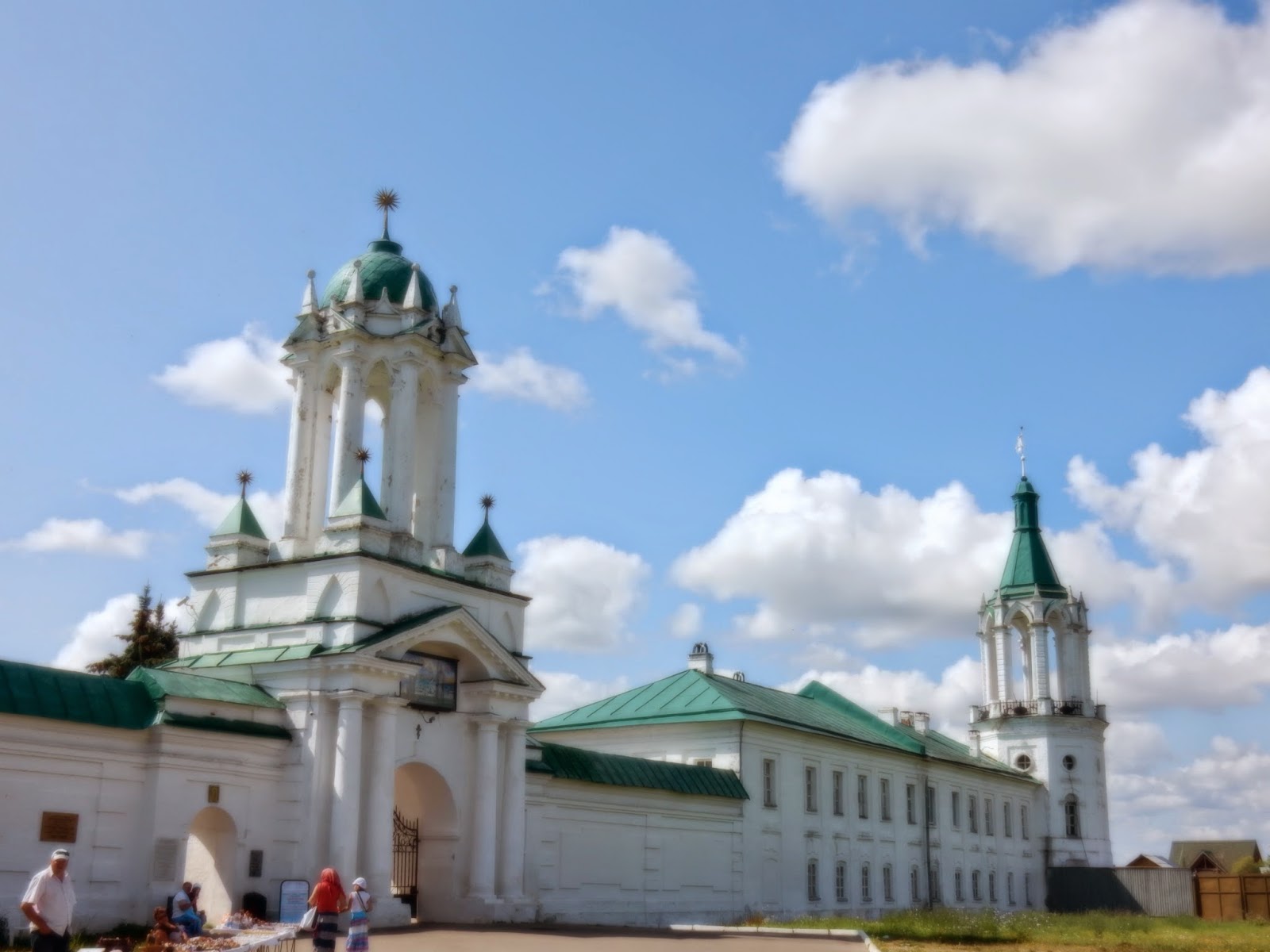Ms
Tolstoy – Rivers and Canals in
Russia
July
19-26, 2014
The
Ms Tolstoy was home for seven
days as we gently cruised along a series of canals and rivers on our
way south. The Russian countryside is lovely; thick with foliage,
trees, and nothing else and then dotted with homes, some simple and
others large and luxurious; whatever the size, these “dachas”
are, for the most part, the weekend, summer, and holiday retreats for
their owners. It was a relaxing week with a stop each day to explore
another town, each with its own unique story and population. While on
the ship, one could “while away the hours” doing very little or
take advantage of the many activities offered - Russian history and
culture lectures, cooking, language, crafts, and dance instruction,
blini sampling, and, since we were in Russia, there was the almost
daily evening vodka party!
To
get from St. Petersburg to Moscow (or the reverse), the ship had to
pass through a total of 18 locks and was raised or lowered an average
of 26-39 feet each passage. It's a remarkable process to watch, and,
even though automatic, there must be continual communication between
the operators and the crew on board. Gates are either opened or
closed, depending upon whether the water in the canal needs to flood
to the level outside and lower the boat or add to the amount of water
in the canal to equalize it with the outside to raise the boat.
Whether the first or the last time it occurred, going through a lock
and experiencing this intriguing feat of engineering was always
fascinating. From the Neva river to the Volga, the mightiest river in
Europe, or cruising through Ladoga Lake, Europe's largest, Onega
Lake, second largest and one of the world's purest lakes, or Lake
Beloye, where, located on its coast is Belozersk, one of the oldest
Russian towns, each day brought learning and adventure.
Mandrogi
– This town was razed to the ground during the Second World War so
what stands now is a reproduction of a traditional Russian
settlement. Historical, cultural, and commercial projects are
underway and there are numerous artisan workshops where the
traditional Matryoshka dolls are made...and ready for purchase!
Mandrogi is more for the tourist to get a taste of what a Russian
village was like, but besides the shops, there are lovely walking
trails through the trees and along the river.
Kizhi
Island – One of the1650 islands in Lake Onega, Kizhi was once (1st
millennium A.D.) a center of pagan ritual and inhabitants from
surrounding settlements would come to the island to burn fires, dance
round dances, and pray to the Gods of Sun and Rain. The region
flourished as the free land, rich forests, and abundance of fish
attracted people for hundreds of years. The 2nd
half of the 16th
century brought the first mention of churches in Kizhi and the
reforms of Peter the Great in the early 1700's brought an increase in
construction and the growing importance of the church in everyday
life. The Church of Transfiguration, the Church of the Intersession,
and the Church of Lazar of Murom besides numerous chapels make up the
ensemble of religious structures on the island; these, plus the
centuries-old households that are now museums, have earned Kizhi the
Unesco World Heritage Site title.
Goritsy
– We began with a walking tour of the city led by a young woman who grew up on Goritsy and whose parents' home we had the pleasure of visiting.This was followed by meeting with the principal at the local school and then a performance done by youngsters at the school.The remains of the Nunnery of the Resurrection, founded by
Princess Yefrosinya Staritskaya when she was ordered to take the veil
by Ivan the Terrible is also a fascinating gem of Russian history found
in this tiny settlement. The nunnery became a place of exile and
imprisonment for high-born women who were considered an
“inconvenience” by those who were juggling/fighting for
power...and many were sent here over the years.
Yaroslavl
– This city, with a population of over 600,000, is 180 miles
northeast of Moscow. The story goes that its earliest inhabitants
were pagan tribesmen who fervently worshiped the bear and who took
delight in ambushing the traveling merchant ships. In 1010, the
merchants asked Prince Yaoslav the Wise for his help so he sailed up
the Volga with the cargo ships and defended them against yet another
native attack. When he went ashore to reason with the tribesmen, they
“threw him to the fate of a savage bear”, confident that the
animal would take care of the prince. How shocked they were to see
Yaroslavl kill the bear with an ax! What followed was the building of
a church and the founding and naming (for himself) the city of
Yaroslavl.
Uglich
– Approaching Uglich was simply memorable as its churches and cathedral appeared on the horizon in stunning red, blue, and gold. The town today is "sleepy backwater", but its beauty and tragic past (war, siege, fire, political intrigue and death) have made it one of Russia's most beloved cities. It was also a favorite stop for many of us because it was here that we went
to different homes for tea and a lovely cultural experience. Not to mention, its outdoor market was the last shopping stop before Moscow and its high prices!


















































No comments:
Post a Comment